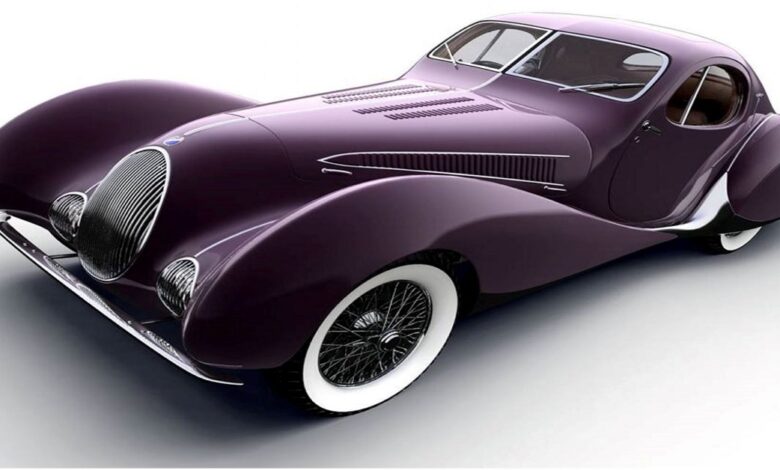1937 Talbot-Lago T150-C-Ss Is Best Of The Best.

World’s Best Concours Car. How a Talbot-Lago won ‘Best of the Best’. Teardrop Talbot-Lago Officially the world’s best concours winner. This Talbot-Lago T150-C-SS has been judged the supreme concours winner of the 2015 season.
In the old car world, a Best in Show at Pebble Beach has traditionally been as good as it can possibly get for an owner who’s into the concours scene. Other concours may be just as special in their individual ways but the name of California’s pioneer event confers a certain elevated status on any car that’s done well there.

A class win at ‘Pebble’ is a cast-iron guarantee that the car in question is of the very top rank. Since 2016, however, there’s been a new goal for concours aficionados to aspire to: the Peninsula Classics ‘BEST OF THE BEST’ award. Not just of all the fabulous machinery on show at Pebble Beach, but of all the world’s major concours. It’s voted on by 24 internationally renowned judges and the first such award – covering the 2015 season – went to Peter and Merle Mullin’s 1937 Figoni and Falaschi-bodied Talbot-Lago T150-C-SS.

The Mullins’ Talbot-Lago is something of a veteran of concours events. Since the mid-1980s it’s taken five class wins at Pebble Beach, plus numerous other concours victories, and scored Best in Show at the Goodwood Festival of Speed’s Cartier Style et Luxe concours in 2015 – the win that finally propelled it to the very top of the tree, by qualifying it for 2015’s Best of the Best award. So what, you may be thinking: a car as stunning as that is always going to be a contender for top honours. But the intriguing fact about the Mullin Talbot-Lago is that it also gets driven. Peter has done a 1000-mile Louis Vuitton rally through Europe in this teardrop coupé and, as he tells us over a relaxing cup of tea in a friend’s house just after the mayhem of Pebble Beach, the reason is simple: ‘It’s my favourite car, and it’s fun to drive.’

‘I fell in love with this car way before I was able to add it to the collection,’ explains Peter. ‘The designer Brooks Stevens had one, and I thought it was the most gorgeous automobile I’d ever seen. Then, in 1984-1985, I heard of one that might be coming up for sale, so I pursued it and made the deal happen. It’s been a favourite for a long time now.’
The teardrop design was properly refined decades earlier, however, and Peter is able to reel off his car’s history without a moment’s hesitation. ‘It is a Figoni design, created in 1937, one of a small series known as goutte d’eau or teardrop Talbot-Lagos after the shape that a raindrop makes as it falls through the atmosphere, or a teardrop as it rolls down a woman’s cheek.

According to the Figoni archives, Peter’s car, chassis 90106, is one of only 14 ‘faux cabriolets’ built by the coachbuilder in 1937-1938. It was received as a chassis on 29 September 1937 and bodied as a faux cabriolet sans toit ouvrant – a ‘hardtop convertible without sun roof’. Two other cars from that small batch, numbers 90116 and 90117, raced at Le Mans in 1938 and ’1939, where their aerodynamic teardrop shape must surely have helped their performance: 90116 finished third overall in ’1938, although its sister car failed to finish in ’1939.

In 1982 another Californian enthusiast, Pat Hart, bought the car and had it repainted in a more flattering black, which resulted in a second-in-class at Pebble Beach in 1984. Realising that it still wasn’t quite good enough for top honours, he started a restoration that was continued by Peter Mullin when he acquired the car in 1985. Peter entrusted the hugely respected Hill and Vaughn Restorations – that’s Hill as in racing driver Phil Hill – with the job and requested that it was repainted in the subtle aubergine colour you see it wearing today.
